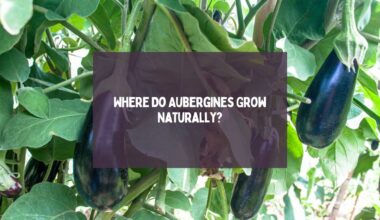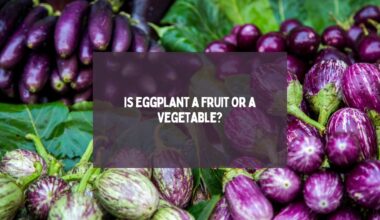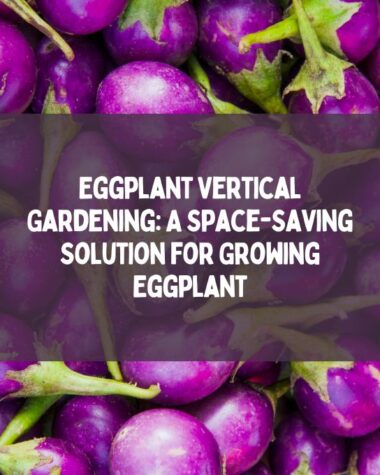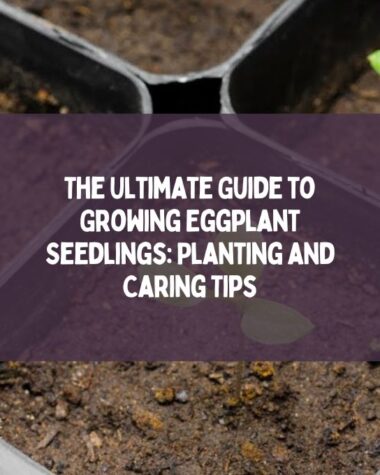The eggplant life cycle begins with the germination of the seeds, which typically occurs within 7–14 days of planting. The seedlings grow into mature plants within several months. During this time, the eggplant plants produce large leaves and fruits and develop a bushy growth habit.
As the plants mature, they produce flowers, which eventually give way to the development of the fruit. Depending on the variety, eggplants can be harvested when they reach full size and have a shiny, smooth skin. After harvesting, the plants can continue to produce fruit until the end of the growing season.
In this article, I will explain the eggplant life cycle, from seed germination to harvesting and storing.
Let’s start
6 Stages Of Eggplant Growth

The 6 stages are given below;
1. Seed Production of Eggplant
The seed production stage of the eggplant life cycle occurs after the plants have matured and produced fruit. The mature fruits contain seeds that can be saved for future planting. To collect the seeds, the mature fruits should be allowed to fully ripen and begin to dry out on the plant.
Once they have dried, the fruits can be harvested and the seeds removed. The seeds should then be cleaned and stored in a cool, dry place until they are ready to be planted. Eggplant seeds can remain viable for up to 5 years.
Related Reading
- Growing Brinjal at Home: A Complete Guide
- Yellow Eggplant: The Uncommon and Nutritious Vegetable
- What Are Eggplants Called in England?
- How To Grow Aubergine From Seed?
2. Eggplant Seed Germination
Eggplant seeds require warmth and moisture to germinate successfully. Before planting, the seeds should be soaked in water for 12–24 hours to aid in the germination process. The seeds are then planted 1/4 inch deep in well-draining soil and kept in a warm, sunny location.
The ideal soil temperature for eggplant seed germination is between 70 and 90°F (21-32°C). Within 7–14 days, the seedlings will emerge from the soil, and they can then be thinned to one or two plants per pot or spaced 18–24 inches apart in the garden.
3. Eggplant Seedling Stage
When seeds have germinated, the emerging eggplant seedlings require plenty of light, warmth, and consistent moisture to grow strong and healthy. The seedlings should be kept in a warm, sunny location and watered regularly to ensure they do not dry out.
Once the seedlings have grown their first set of true leaves, they can be transplanted into larger pots or into the garden. so that the plants are spaced appropriately to allow for proper air circulation and light exposure.
4. The Flowering Stage In Eggplant
After the vegetative growth stage, the eggplant plant produces small, purple, or white flowers that are usually self-pollinating but can also be pollinated by bees and other insects.
Make sure that plants receive adequate water and nutrients during this stage to support the development of the flowers and subsequent fruit. With proper care, the flowers will continue to develop and eventually give way to the development of the fruit.
5. Fruit Development in Eggplant
The fruit development stage marks the period during which the eggplant fruit matures and ripens. As the fruit develops, it’s important to ensure that the plants receive consistent moisture and nutrients to support their growth.
Once the fruit is fully mature, it can be harvested and used in a variety of delicious culinary dishes. The fruit development stage leads to the production of delicious, nutritious eggplant fruit.
6. Storing and Preserving Freshly Harvested Eggplant

Harvesting is the final stage of the eggplant life cycle and is an important step in ensuring optimal flavor and texture of the fruit. Eggplant fruits should be harvested when they are fully mature, typically when they reach a length of 4-6 inches and have a smooth, shiny skin.
It’s important to use a sharp knife or pruning shears to cut the fruit from the plant, taking care not to damage the stem or nearby foliage. Once harvested, the fruit should be stored in a cool, dry place until ready to use.
Proper harvesting techniques are essential for maintaining the health and productivity of eggplant plants and ensuring a bountiful harvest.
Role of Nutrients and Water in Eggplant Vegetative Growth
The vegetative growth stage is a critical part of the eggplant’s life cycle. During this stage, the eggplant plant produces large, lobed leaves and develops a bushy growth habit. Watering and fertilization are also crucial to ensuring healthy vegetative growth.
During this stage, the plants should be fertilized with a balanced fertilizer every 2-3 weeks. With proper care, the eggplant plants will continue to grow, producing flowers and fruit in the later stages of the life cycle.
Common Issues in Eggplant Budding and How to Overcome Them

During this stage, the eggplant plant produces flower buds that will eventually develop into the fruit that we eat. To promote optimal budding, it is important to provide the plant with appropriate growing conditions, including sunlight, adequate water, and nutrient-rich soil.
Common issues that can arise during the budding stage include poor pollination, pest and disease damage, and environmental stress. Proper management of these issues is key to ensuring a bountiful eggplant harvest.
Related Reading
- How To Improve Soil Quality To Grow Carrots?
- Unveiling the Secrets of Perfect Pumpkin Soil For Growing Pumpkins
- Tomato Stakes Vs Cages: Which is Better for Support?
- A Complete Growing Guide for Zucchini Plant Care
Conclusion
The eggplant life cycle is a fascinating process that begins with the germination of the seed and progresses through various stages of growth and development until the fruit is mature and ready for harvest.
Each stage of the life cycle requires specific care and attention to ensure optimal growth and productivity. From the seedling stage to the vegetative growth stage, budding, flowering, and fruit development, each stage plays an important role in the overall success of the plant.
Thanks for reading!







